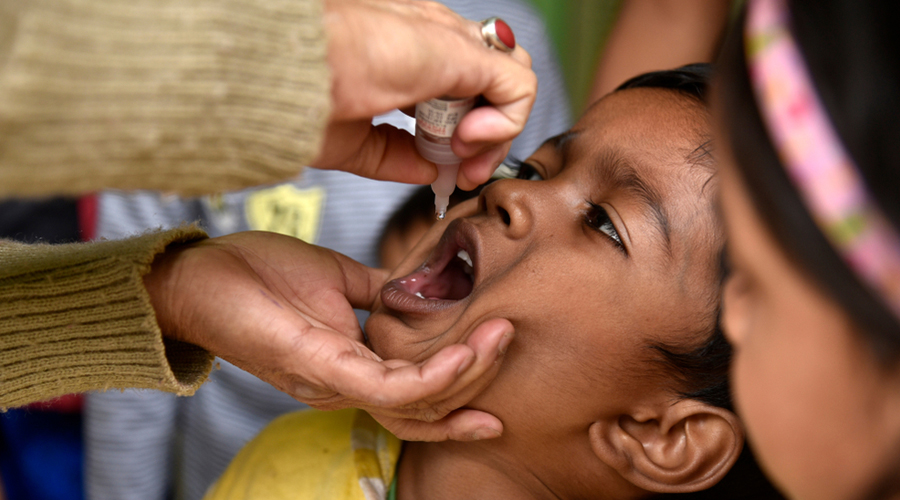The death of a disease. That is what ‘eradication’ is all about — the permanent, worldwide elimination of disease transmission caused by a particular pathogen so that no one suffers from that ailment ever again. Of the myriad pathogens that can cause human disease, only one, smallpox, has been eradicated so far. That is why we no longer see the dreaded illness that was prevalent in the world until the late 1970s, and we no longer need to routinely vaccinate against it anymore.
Poliomyelitis — a disease that primarily affects young children and causes paralysis that is typically permanent and, in severe cases, can result in death — is now set to be the second disease affecting humans to be eradicated. In 1988, the Global Polio Eradication Initiative was formed with the aim to eradicate the disease. It was spearheaded by Rotary International, the Centers for Disease Control and Prevention, the World Health Organization and Unicef. Back then, on a daily basis, approximately 1,000 children were permanently affected by the disease. This was a staggering and depressing number, particularly in the light of the fact that the illness was preventable with the vaccines that were available, such as the inactivated poliovirus vaccine or oral poliovirus vaccine, both first licenced more than 60 years ago in the United States of America.
Over the past several decades, the GPEI has evolved to become one of the largest public-private partnerships with more than 50 donor organizations, 20 million volunteers, several national governments and philanthropic organizations, such as the Bill & Melinda Gates Foundation, and agencies such as Gavi, the Vaccine Alliance joining forces to wipe out polio from the world. The GPEI and its partners, with the help of countless local health workers and vaccinators, has made it possible to take the vaccine to households in the remotest corners of the world, from flood-prone northern Bihar in India to hard-to-access Borno in Nigeria. The eradication programme has made a valiant attempt to deliver the vaccine to any place there could be a vulnerable child. At present, only two countries, Pakistan and Afghanistan, continue to have ongoing wild polio circulation. This not only results in children in both nations getting infected with the virus but also puts other polio-free regions at risk of getting re-infected. Civil unrest and insurgency, which prevent vaccinators from reaching children, have been among the key bottlenecks in these remaining pockets of polio transmission.
This January marked 10 years of India being free of wild poliovirus transmission. The last child ever to suffer paralysis with the wild poliovirus in the country was a little girl from West Bengal, living not too far away from Calcutta. It took an unprecedented and concerted effort on the part of the Central and state governments, global partners and donor agencies, health care professionals and, most important, the frontline vaccinators, to come together to rid all corners of the country of the poliovirus, in spite of significant challenges such as overcrowding, poor sanitation, low accessibility and population movement. Community leaders also set examples by joining hands to educate families on vaccine acceptance, and national icons such as Amitabh Bachchan and A.R. Rahman made the vaccination campaigns a point of national pride.
With this remarkable scale and intensity, polio campaigns came to be viewed as celebrations in a nation known for its year-round festivities. Today, India’s triumph against polio is not only the harbinger of hope for the world to eradicate the disease, but also lays out a possible framework for large-scale pandemic response strategies — critically relevant for the Covid-19 era.
The poliovirus affects one and all, irrespective of caste, creed, race, and religion. Thus, a unified effort from the global community could help us gain the final edge over the virus for a decisive win in this epic battle. The impact of ending polio forever will be an enduring gift for generations to come. As we celebrate India’s remarkable 10-year anniversary of achieving and sustaining its polio-free status, and as we battle through the Covid-19 pandemic with the promise of new vaccines and healthcare interventions ahead of us, we should be united in our resolve to protect everyone against polio and other diseases that are preventable by vaccines. This can be done by ensuring complete and timely vaccinations for all our loved ones — in our households, families, communities and beyond.










